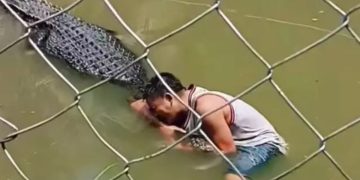When the country started shutting down to prevent the spread of COVID-19, not absolutely everything was able to shut down completely. Healthcare workers obviously still needed to show up to their hospitals, and grocery store workers were still needed to man the aisles and checkout lanes, among many others. And the essential workers needed childcare, too.
For some, that meant leaning on family for support. But when family couldn’t fill the gap, there were still some childcare centers open for those essential workers. Remarkably, those childcare centers, despite caring for the kids of workers who were often at high risk of catching the disease, saw little in the way of infections and avoided any large outbreaks. Now, they think the rest of us can learn something from them.
One of the great uncertainties about re-opening economic activity and returning to workplaces is what to do about the kids.

No parents can go back into the office full-time until they know that their kids are going to be supervised during the day. And, according to recent polling , almost half of parents won’t feel comfortable sending their kids back to the classroom if things don’t vastly improve before the start of the next school year.
So, examining how childcare centers that had to stay open managed during the lockdowns could be well worth the effort.
It’s not a small sample size, either.

Throughout the lockdowns, the YMCA cared for more than 40,000 kids between the ages of 1 and 14 at 1,100 different sites, according to NPR . And in New York City, the Board of Education cared for more than 10,000 kids at 170 sites.
And yet, the YMCA said that they never saw more than one case of COVID-19 at any one site. A study by Brown University economist Emily Oster found similar results when looking at 916 centers caring for more than 20,000 kids: just over 1% of staff and 0.16% of kids infected.
So, what did those childcare centers do right?

Back in March, they were doing many of the things that the CDC now recommends. For one, they kept groupings of kids smaller – in the case of the Y, that meant no more than nine children per adult watching them. Those groups tended to spread out in larger spaces like board rooms or basketball courts.
Kids were also screened for temperatures when they arrived, and they were greeted by staff members in masks, gloves, and sometimes gowns. Any kids who weren’t feeling well were asked to stay home.
For activities, the staff members used creative incentives to get kids washing their hands thoroughly and frequently.

“We were teaching them not just ‘rinse your hands,’ but ‘scrub them.’ And instead of having to dread washing their hands, they were able to get excited and laugh and have fun while they were doing that,” Libby Corral, the chief operating officer at Valley of the Sun YMCA, told NPR.
They also made distancing more fun by having kids make “airplane arms,” and made sure each child had their own arts and crafts supplies so they wouldn’t have to share.
Now, experts aren’t exactly rushing to get kids back in classrooms just yet.

While child-to-parent transmission of the disease appears to be quite rare – Iceland’s thorough contact tracing program found only two cases of child-to-parent transmission, according to The New Yorker – there are still many questions, including how kids with underlying conditions like asthma might be affected, and whether it would be safe for teachers and staff members with underlying conditions to be around kids.
There’s also the question of those limited groupings and uses of larger, more open spaces.

Those would be much more difficult to implement in a school than they are in a YMCA.
Nevertheless, some experts are suggesting that it’s time to take what’s been learned so far and re-examine where we stand.
“It’s not zero risk, [but] we’re acting with a March 2020 understanding of COVID-19 and kids, and not with a June 2020 understanding of COVID-19 and kids,” education policy expert Elliott Haspel wrote in an op-ed.
h/t: NPR

















































